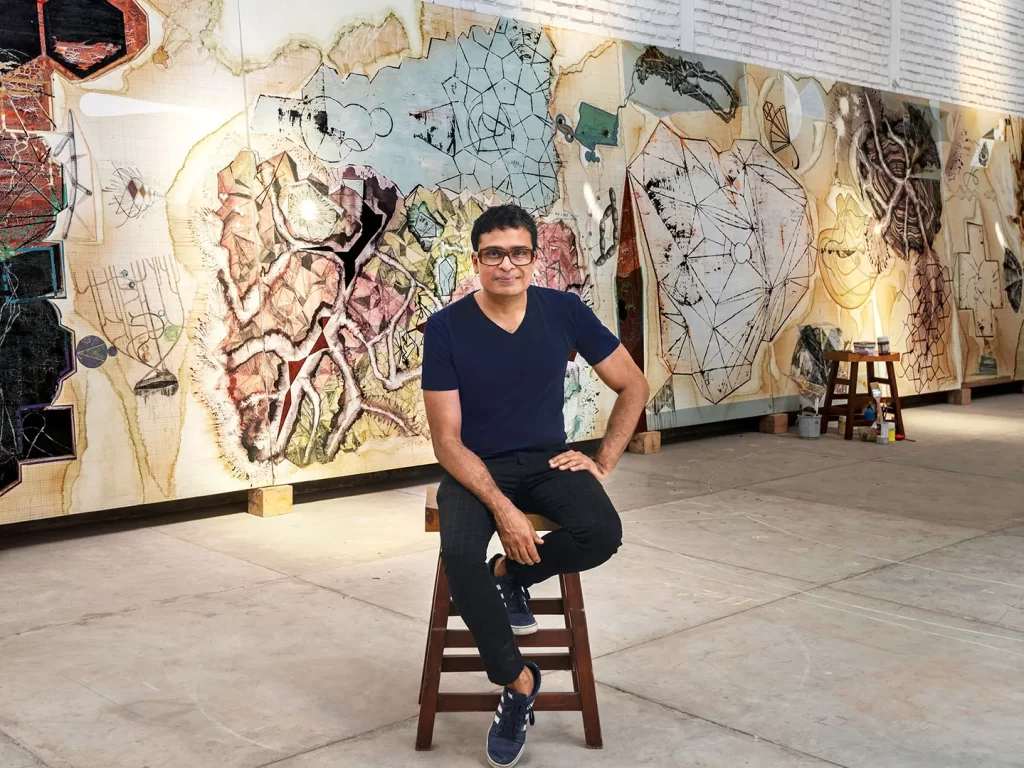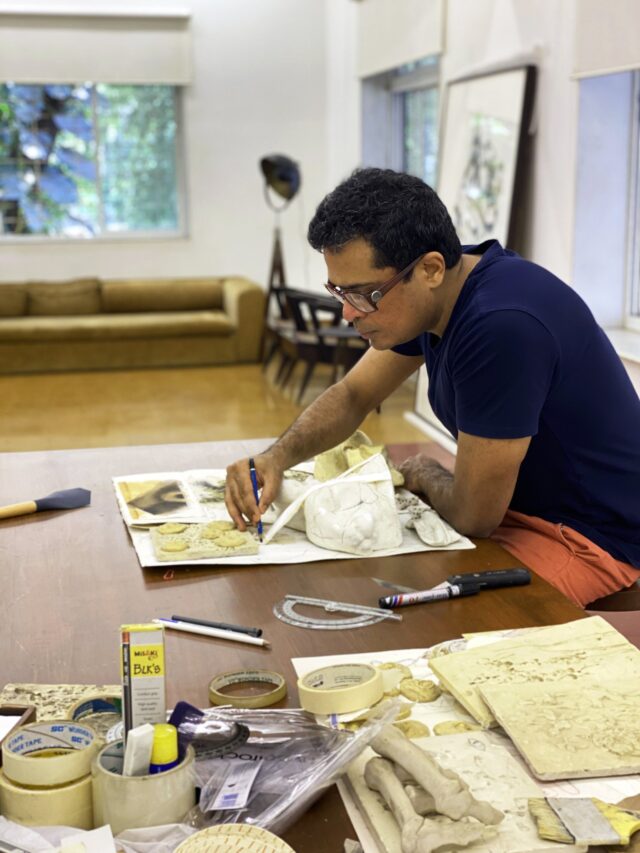14th July. ON THIS DAY
While artists tend to experiment with mediums, rarely do they switch. Oftentimes, they are bound by the popularity of their medium; hence pigeonholed. Then there are those artists who are colloquially known as the ‘jack of all trades.’ An Indian contemporary artist whose oeuvre includes paintings, photography, collages, sculpture, and multimedia is Jitish Kallat. Born in 1974, in Mumbai, he graduated with a BFA in painting from Sir JJ School of Arts. He served as the Artistic Director of the 2nd Kochi-Muziris Biennale and is one of the trustees of the India Foundation for the Arts. He is married to visual artist Reena Saini Kallat.
Jitish Kallat Artist Style
Since his first solo exhibition – ‘PTO’ at Chemould Prescott Road, Jitish Kallat art techniques have undoubtedly evolved, even if the themes remain the same. His artwork revolves around the notions of life cycle, death, identity, lineage, and city life. His canvases hold spontaneous and rustic appeal, imbued with diverse textures, which in turn manipulate the image. Kallat effectively handles delicate subject matter, which focuses on degradation, bastardization, and the destruction and retrieval of culture and history.
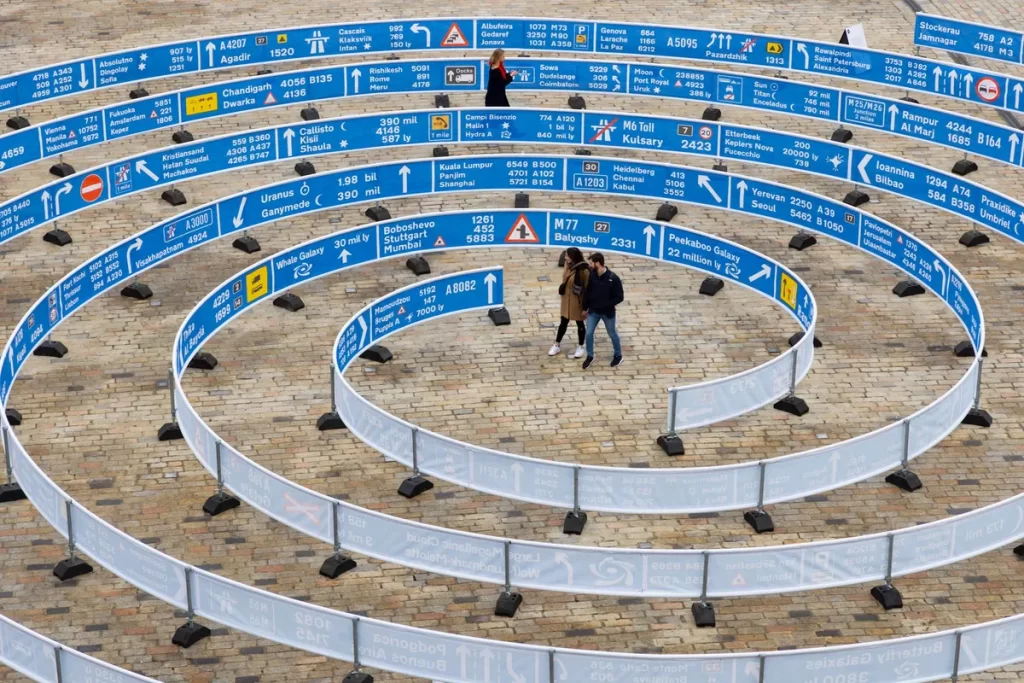
Every Jitish Kallat artwork boasts a bold and colourful visual language that draws inspiration from popular advertising imagery, a proponent of urban consumerism. Additionally, they represent a conflux of Asian and European artistic traditions. But how does Jitish Kallat successfully unify his multimedia artwork? It is through the relationship between ‘self,’ a term which is interchangeable with the audience. Jitish Kallat artworks are self-referential; an experience shared by the Mumbaikers. His art explores monumentality and intimacy; resonating with themes of suffering, hope, and survival.
Jitish Kallat Artworks
With a diverse body of work spanning paintings, sculptures, and installations, Jitish Kallat has carved a distinct niche for himself in the global art scene. From the bustling streets of Mumbai to the serene landscapes of the world, Jitish Kallat’s artwork serves as a profound reflection of the human condition in the modern era. For example, in Jitish Kallat epilogue, he describes his late father’s life through 22, 889 moons that he saw in his life. The moon is represented by ‘rotis,’ which not only amounts to Indian ritualistic life but also elucidates the concept of daily bread.
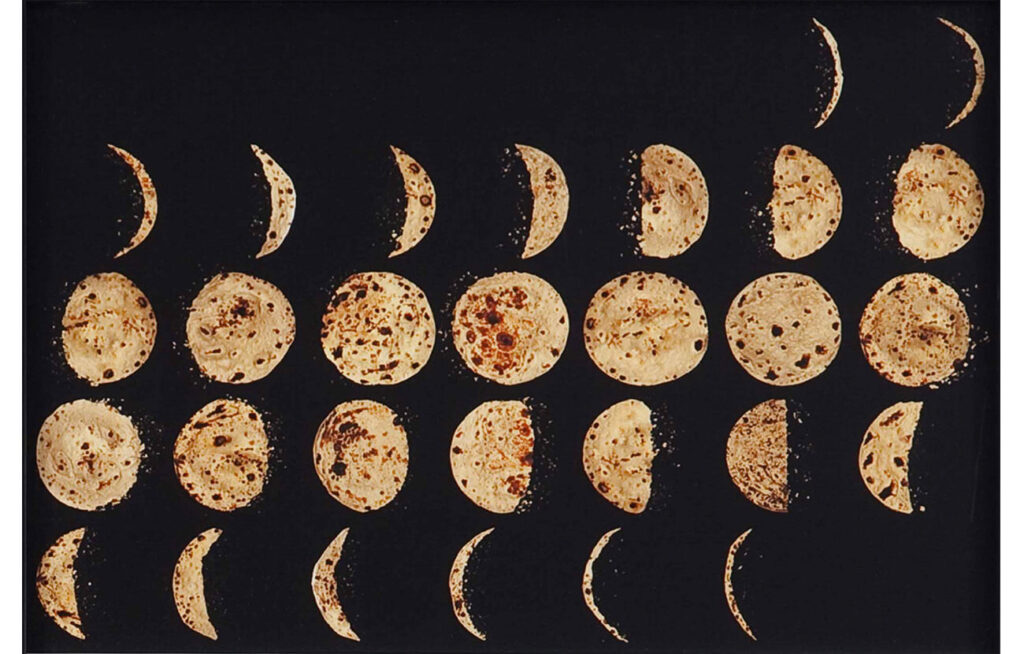
Some of his popular works have been discussed below.
Jitish Kallat Paintings
His paintings, often characterized by intricate details and vibrant colours, capture the essence of contemporary life with a poignant touch. His notable painting group, ‘Circadian Study (contact tracing),’ cements the fact. Enamoured by the natural elements, this painting reincarnates the dead fallen twigs. These Jitish Kallat paintings showcase the use of red and green lines, depicting the contour of the branches at different times of the day. Through this work, the inherent transience (tree-branch & sun-twig) can be understood. At this point, the canvas disappears, with the twigs and their contoured shadow creeping all over.
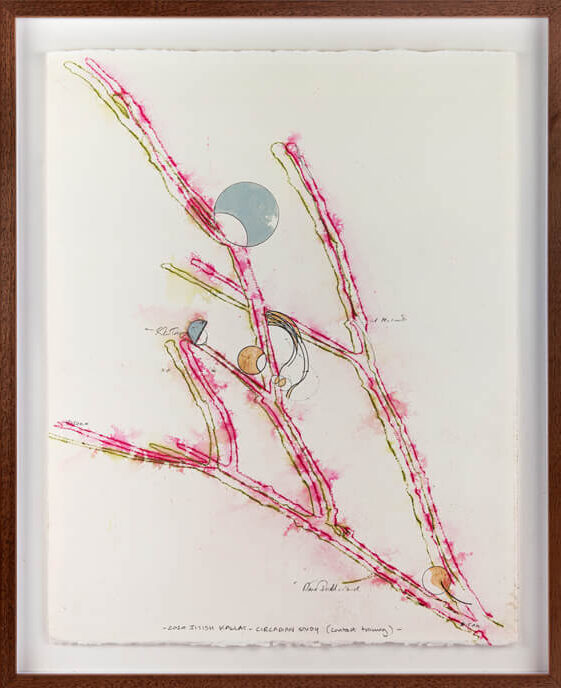
Another group of Jitish Kallat paintings which are evidentiary to his obsession with natural phenomena are the 365 paintings titled ‘Integer Study (drawing from life).’ At first glance, they resemble a Rorschach graph. One would see three integers, alluding to the estimated global population, birth, and deaths. These integers evoke the concept of triangulation (based on trigonometry). Through these numbers, Jitish Kallat poses the questions of evolution & decay; existence & extinction; ecology and climate to his audiences.
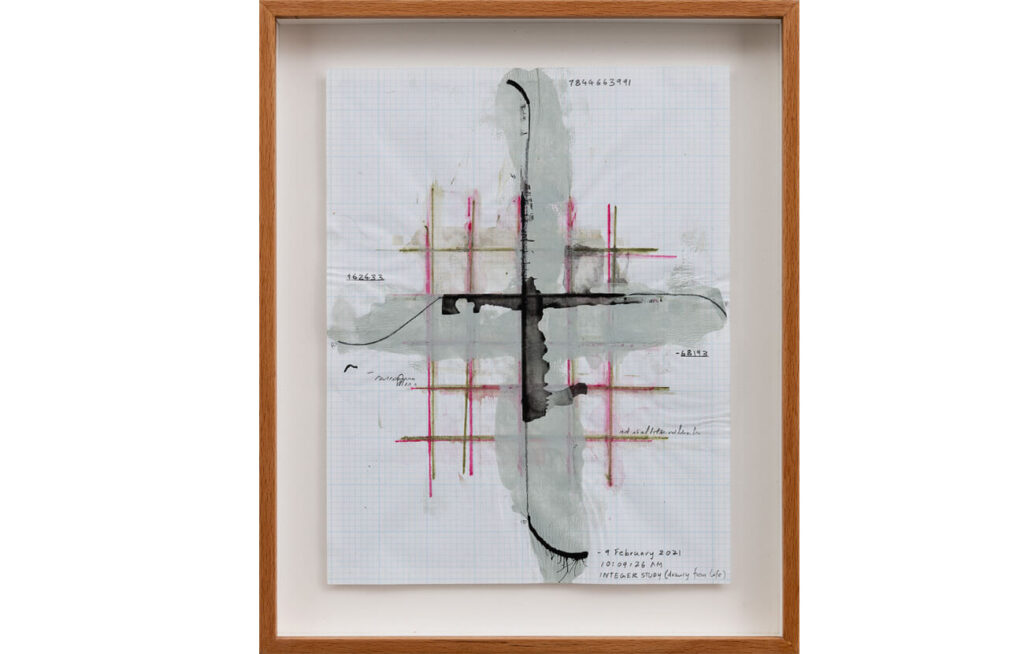
Jitish Kallat Sculptures
In addition to his paintings, Jitish Kallat sculptures exhibit a captivating blend of form and concept, often challenging viewers’ perceptions of reality. One of his notable sculptures, ‘Aquasaurus,’ depicts a hybrid creature (akin to Jake and Dinos Chapman’s intentionally morphed artworks). Modelled after the water tankers, a staple during the summers in urban India, this sculpture evokes fear amongst the audience. It is as if the gigantic mammoth emerged from the depths of the ocean. The tasteful yet grotesque anthropomorphising is what captivates the viewers. Laced with teeth, spines, and many bones, the monstrosity symbolizes the confluence of ancient history and contemporary reality. Through this artwork, Kallat delves into the theme of evolution and the interconnectedness of all living beings, inviting viewers to ponder upon the fragile balance of existence.
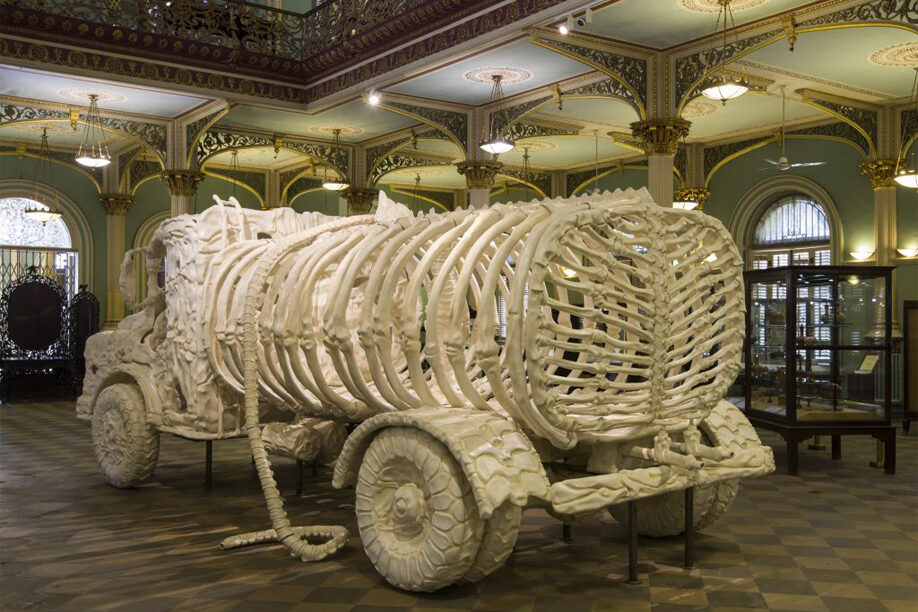
‘Syzygy’ is yet another Jitish Kallat sculpture which despite its easy representation connotes various meanings. The installation depicts sleeping figurines, akin to the commuters on the train platform. A state of sleep is a trance where the real ‘self’ vanishes. However, the figurines describe a state of restlessness and awareness towards the immediate surroundings. Through this sculpture, the artist replicates the vicious cycle of discipline and order. The title ‘Syzygy’ is derived from philosophy, astronomy and even Akbar Padamsee’s, stop-motion film.

At the heart of Jitish Kallat’s artistic practice lies a commitment to exploring the complexities of human existence and the ever-shifting landscapes of contemporary society. His unique style, characterized by a fusion of traditional techniques with innovative conceptual frameworks, has earned him widespread acclaim in the global art world. Whether through his paintings, sculptures, or installations, Kallat continues to push the boundaries of artistic expression, inviting viewers to embark on a journey of introspection and discovery.
Image Courtesy – GQ India

